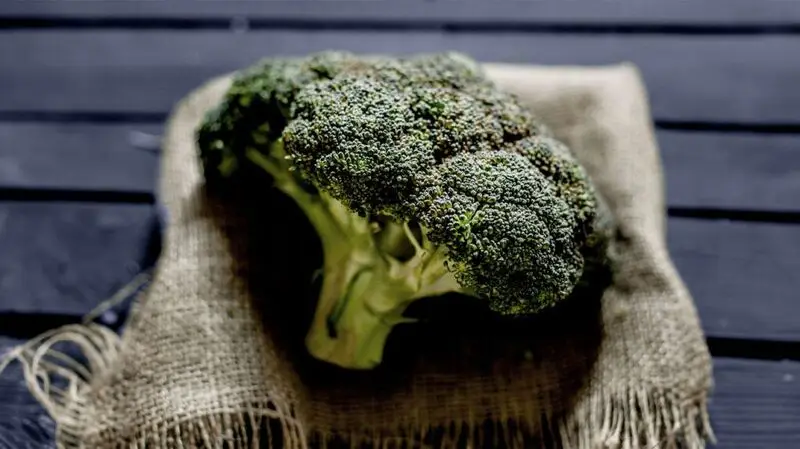
- Each year about 15 million people globally experience a stroke.
- How quickly therapy is administered and its effectiveness has a large effect on a person’s recovery after a stroke.
- Researchers from the Heart Research Institute in Australia have found that a natural chemical found in broccoli may help both prevent and treat stroke.
Every year, about 15 million people around the world experience a stroke — a cardiovascular condition that occurs when blood and oxygen are unable to get to the brain.
Depending on the type of stroke, the main
How quickly therapy is administered and its effectiveness has a large effect on a person’s recovery after a stroke.
Scientists estimate that only about 10% of stroke survivors make a
Now, researchers from the Heart Research Institute in New South Wales, Australia, have found that a natural chemical found in broccoli may help both prevent and treat stroke.
The study was recently published in the journal American Chemical Society’sACS Central Science.
Past studies show that stroke is currently the
“Stroke imparts a significant economic burden on the health system and costs around $34 billion per annum in the United States,” Dr. Xuyu (Johnny) Liu, researcher and leader of the Cardiovascular-Protective Signalling and Drug Discovery Unit at the Heart Research Institute in New South Wales, Australia, and lead author of this study told Medical News Today.
“About 85% of these cases arise from a blood clot obstructing an artery leading to the brain, depriving the brain of essential nutrients,” he said.
“Despite the significance, there is only one therapeutic agent, called
“Therefore, there is an unmet need in this field to improve the efficacy of tPA and identify more treatment options for stroke patients,” he said.
For this study, Dr. Liu and his team turned to a common
“Broccoli and other cruciferous vegetables have evolved to produce a unique class of natural products known as isothiocyanates, renowned for their chemopreventive and neuroprotective properties,” Dr. Liu explained.
“This prompted our curiosity about whether these natural gifts could address a pressing issue in stroke treatment—finding a safer and more effective blood thinner to synergize with tPA,” he told MNT.
This is not the first study looking at cruciferous vegetables and heart Health.
A study published in April 2018 found that eating more cruciferous vegetables may help prevent
Research published in May 2020 — known as the VEgetableS for vaScular hEaLth (VESSEL) study —
During this three-year pre-clinical trial, researchers tested what type of effect the broccoli compound had on assisting clot-busting medications.
“tPA is a medication designed to treat specific stroke types caused by blood clots blocking brain vessels. It acts like a molecular plumber, dissolving the clot to reopen the vessel and restore blood flow. However, enzymes and chemicals released from the dissolved clots can activate platelets, potentially causing new clots forming at a similar position,” Dr. Liu said.
“A large number of blood thinners have been investigated in conjunction with tPA to enhance vessel clearance; however, they unfortunately elevate the risk of brain bleeding — the most feared complication of tPA therapy. Therefore, identifying blood thinners that can improve the clot-busting potential of tPA, without causing excess bleeding, would represent a major advance in the treatment of stroke,” he explained.
Dr. Liu said his team’s discovery of
“It uniquely inhibits platelet aggregation under pathological conditions without causing significant bleeding in preclinical models, tripling tPA’s effectiveness and slowing bad clot formation leading to stroke,” he added.
At the conclusion of the study, scientists found adding the broccoli-derived compound to tPA bumped the medication’s success rate to 60%.
“The significant increase in the success rate without noticeable bleeding was surprising. This synergistic effect rivals that of top-performing anticoagulants and antiplatelet agents in this field; however, it does not impair the formation of life-saving clots, a capability not being able to achieve by existing blood thinners tested with tPA,” Dr. Liu said.
Additionally, the researchers reported that during initial testing, once broccoli-derived molecules were administered they helped slow down the onset of stroke.
“The outcome was anticipated, given the extensive evidence of broccoli and other cruciferous vegetables’ effects on stroke prevention,” Dr. Liu said.
“We hypothesized that broccoli’s most bioactive compound would mirror these preventive effects seen in clinical trials. Notably, (our) studies also elucidated the mechanisms behind stroke prevention, offering a detailed understanding of this broccoli-derived natural product’s health benefits at the molecular and cellular levels,” he added.
Dr. Liu told MNT that he believes this research will help open new avenues for exploring the health and therapeutic benefits of diet-derived natural products, potentially leading to novel drug candidates for stroke treatment that promise both efficacy and safety.
“This technology could also advance studies on precision nutritional therapy, offering safer dietary intervention options for patients with a high risk of getting strokes and thrombosis,” he added.
And because the broccoli-derived compound did not seem to cause any bleeding, Dr. Liu said this research may also apply to other diseases.
“The unique molecular mechanism of this natural product, which prevents harmful clot formation under various pathological conditions without hindering the formation of hemastatic clots, offers promising therapeutic applications,” he explained.
“[These broccoli-derived molecules] could serve as a blood thinner for high-risk thrombosis patients and as a lead molecule for research into specific cell signaling pathways that differentiate thrombosis from hemostasis.”
— Dr. Xuyu (Johnny) Liu
“We plan to use this natural product as a tool to uncover new protein targets and cell signaling pathways involved in stroke,” Dr. Liu continued.
“Our goal is to identify novel protein targets for precision medicine development. We will also investigate natural products from other vegetables known to prevent stroke and thrombosis. Integrating these molecular insights into nutritional intervention strategies could significantly reduce stroke and thrombosis risks,” he added.
After reviewing this study, Dr. José Morales, a vascular neurologist and neurointerventional surgeon at Pacific Neuroscience Institute in Santa Monica, CA, told MNT he found the research very interesting.
“There’s a lot of interest in finding new chemical compounds or natural ingredients that may enhance our cerebrovascular Health and prevent stroke and disease,” Dr. Morales continued. “And I think that the findings in the study were pretty interesting in the modulation of platelet activity and some of the findings that they uncovered in their experiments.”
“I would be interested in seeing more direct experimentation like animal models, transgenic animal models, that have hypercoagulable states or even say specifically arterial thrombosis due to platelet aggregation, and how this
MNT also spoke with Monique Richard, a registered dietitian nutritionist and owner of Nutrition-In-Sight, about this study.
Richard explained that a naturally occurring compound in broccoli called
“Various compounds including the end product, sulforaphane, have been shown to be protective, anti-inflammatory, and have antioxidant properties, but they are also rich in fiber which helps to decrease arterial buildup, supports gut microbiota Health, and also includes an array of heart-protective vitamins and minerals such as C, B9 (folate), potassium and vitamin K, which ironically has a role in blood clotting,” she detailed.
“All of these nutrients working together to support metabolic reactions and systemic function is key to optimizing systemic function,” she told MNT.
Richard said in general, Americans are not getting adequate servings of vegetables rich in fiber, phytochemicals, and various nutrients, especially those from the brassica or cruciferous families like broccoli, brussels sprouts, cauliflower, kale, bok choy, and cabbage.
“In a day the goal is to consume a combined amount of five to eight servings — a serving equates to one cup (of) raw vegetable, like broccoli, or 1/2 cup cooked, such as spinach or kale) of fruits and vegetables a day, with about half being from vegetables,” she explained.
For those looking to increase their cruciferous veggie intake, Richard suggested starting by getting 2 1/2 cups a day.
“For example, tossing one cup of vegetables like cauliflower or broccoli on your salad or as a side for lunch and then having 1/2 cup sauteed bok choy and one cup of cabbage coleslaw for dinner with a lean protein, pasta, or beans would easily exceed the baseline recommendation of 2 1/2 cups. If you added some kale to your morning frittata or smoothie you would be reaping even more whole-body benefits.”
— Monique Richard, registered dietitian nutritionist





